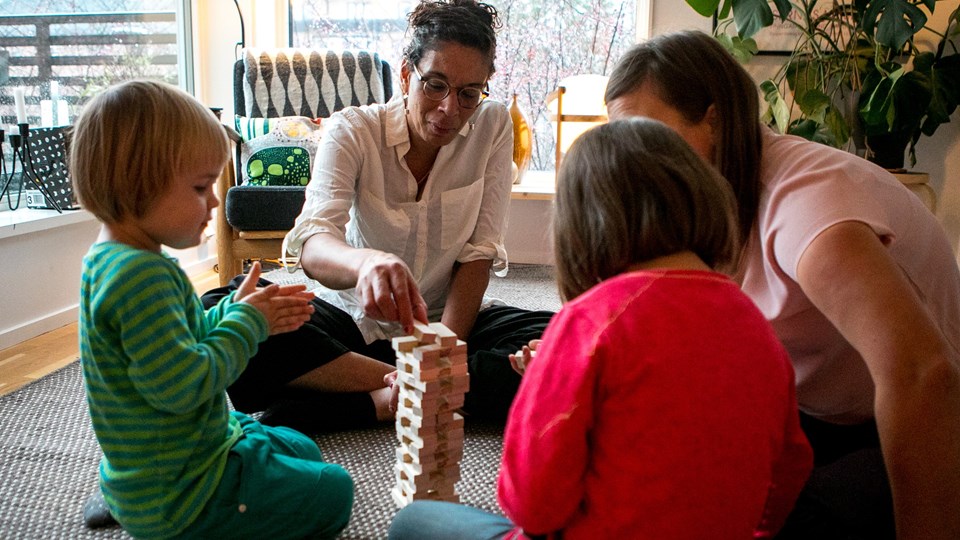Sustainable homes
To have a pleasant and safe home is an important part of ones well-being. But how sustainable are our homes? And what do the sustainability experts say about homemaking and the things we choose to have in our homes?
On TV shows, on the internet, in home design, and in home renovation magazines, we see an endless stream of smartened-up homes. We are bombarded with messages to change, redo, tear out and rebuild, and it is easy to get caught up in this trend. But is it really necessary? The city sustainability experts agree that we should also cherish what is already built. Simply put: let’s take care of what we already have.
Örjan Lönngren is an energy- and climate advisor at Miljöförvaltningen, the Environmental administration of Stockholm. According to him, the construction sector has almost as big an environmental impact as the road transport sector.
Durable materials made to last one hundred years are being torn out and thrown away after fifteen years.
– If we take a closer look at the construction sector, we see that smaller projects by individuals contribute significantly to the creation of greenhouse emissions, Örjan says. This is not only a climate issue, but also a matter of resource efficiency. Durable materials made to last one hundred years are torn out and thrown away after fifteen years.
Also, the more the materials are blended together, the more difficult it is to recycle them.
– In many cases, a strong composite material assembled by many different materials is impossible to recycle since we don´t know what it´s made of. Instead, it gets thrown away as garbage. Although it gets burnt for district heating, it still is a terrible waste.i.
Does it matter which kind of plastic I use?
The things you keep in your house can contain harmful substances. Not least in the many different kinds of plastics that surrounds us.
– Plastic is a very practical material, says Anne Lagerqvist, project leader at Miljöförvaltningen, the Environmental administration of Stockholm. Produced and handled correctly it can fill many important functions; for instance, in the healthcare sector. But because it´s so easy to use plastic it often becomes a force of habit.
But because it´s so easy to use plastic it often becomes a force of habit.
– Plastic is sometimes labeled with a triangle containing a number, which shows what type of plastic the product is made of, Anne explains.
But plastic almost always contains additives not shown by labels. Polyvinyl chloride (PVC) for instance, found in building materials, toys and electronics, can contain up to 50 percent Plasticizers, which can have a negative effect on the health.
In order to make PVC-plastic soft, different softening agents are used. Phthalates have been commonly used, but since most Phthalates have been proven endocrine disruptive and damaging for reproduction, they are now regulated and other substances are used in its place. Both Phthalates and other new substances are present in our indoor environment, since they easily leak out of the plastic for the lifetime of the material.
– Soft PVC often has a special smell, recognizable from old toys, Anne says. If you can find a triangle label on the object, look for the number 3 which stands for PVC. Avoid giving these toys to children. Polyethylene (PE), Polypropylene (PP) and Polyethylene terephthalate (PET) are three other commonly used plastics. These have shown low risks so far, both regarding the source materials and the additives, depending on how they are used. For instance, Brominated flame retardants can be added to these plastics if they appear in electronics. PE is labeled with the numbers 2 and 4, PP with the number 5 and PET with the number 1 in the triangle label.
There are lots of bowls, ladles and other kitchen gear to be found, made in materials that are better from a chemical perspective.
Anne recommends that we avoid plastics in contact with food; especially hot, fatty and acidic foods since these qualities increase the risk for chemicals to leak out into the food. Unfortunately, it´s quite common to find Polycarbonate (PC) and Polystyrene (PS) in kitchen gear. Polycarbonate is one of many plastics labeled with the number 7, and Polystyrene is labeled with the number 6. Both of these plastics can be damaging to our health. There are lots of bowls, ladles and other kitchen gear to be found, made in materials that are better from a chemical perspective. Polystyrene is also commonly used in disposable food packaging.
Always remember to keep plastics from escaping into the environment.
Be careful with old toys
To shop second-hand gets a green thumbs up. But there are a couple of things that are good to keep in mind regarding your health.
– In second hand stores one can find things from many decades, but both legislation and knowledge around the environmental and the health impacts are continually updated, Anne says. Older products, especially antiques, painted woods and electronics can contain environmental contaminants such as Lead and Cadmium. Toys produced before 2013 can contain Phthalates. For these reasons it is not to recommendable to buy second hand toys made from wood or plastic. It´s great to shop second hand, and exchange clothes with friends and relatives, but be careful with old things, and don´t buy toys older than 10 years.

